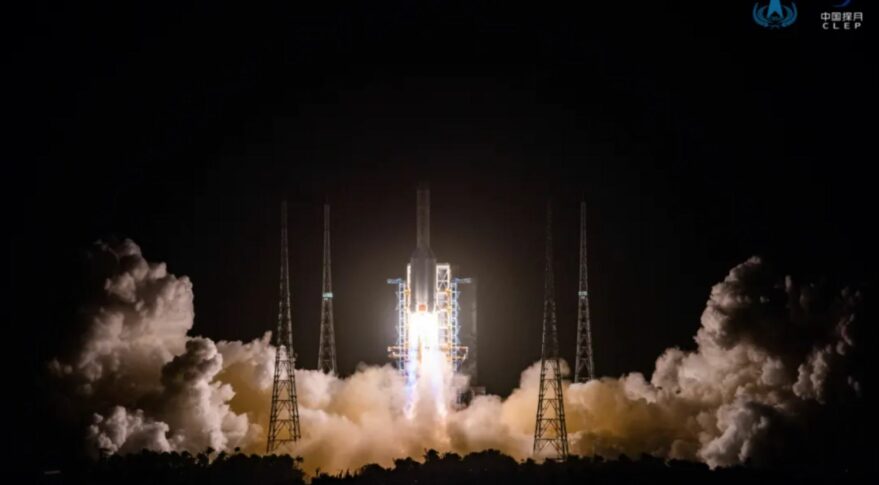China’s super heavy rocket to construct space-based solar power station
- Get link
- X
- Other Apps
by Andrew Jones —

HELSINKI — China plans to use a new super heavy-lift rocket currently under development to construct a massive space-based solar power station in geostationary orbit.
Numerous launches of the upcoming Long March 9 rocket would be used to construct space-based solar power facilities 35,786 kilometers above the Earth, according to Long Lehao, chief designer of China’s Long March rocket series, speaking during a presentation Thursday in Hong Kong.
The project would aim to establish a large collecting area receiving solar energy near constantly, without the atmosphere or seasonal changes affecting energy levels. Converted energy would be then transmitted to Earth via microwaves or lasers. The project would provide large-scale renewable energy and help tackle energy resource scarcity.
The project, according to Long, would begin with a small-scale electricity generation test in 2022, leading to a megawatt-level power generation facility around 2030.
Commercial, gigawatt-level power generation would be realized by 2050. This would require more than 100 Long March 9 launches and around 10,000 tons of infrastructure, assembled in orbit. The complex project calls for a solar energy collection system with an area on the order of square kilometers and a large microwave power transmission sub-system.
Qi Faren, another senior space figure and chief designer of the Shenzhou spacecraft, also spoke of the complex megaproject and its potential value day earlier.
Both Long and Qi however note major challenges including economic feasibility and manufacturing costs, as well as the efficiency and safety of energy transmission.
Space-based solar power projects have previously been considered by countries including the United States and Japan. China listed space-based solar power as a key research program in 2008, according to Xinhua. The China Academy of Space Technology (CAST) in 2019 began building a test base in Chongqing Municipality for researching high-power wireless energy transmission.
New path for Long March 9?
The launch vehicle slated to do the heavy lifting is the Long March 9. The launcher gained formal government approval this spring, following years of studies and technology development. Yet the design may have seen recent radical changes, according to the presentation from Long.
One slide indicates the old design of the Long March 9—consisting of a 10-meter-diameter core stage with four five-meter-diameter side boosters using 500-ton-thrust, dual-nozzle YF-130 engines—is to be replaced by a vision for a single, 10.6-meter-diameter core powered by a cluster of 16 new, single-nozzle YF-135 engines.
Payload capacity would increase from 140 metric tons to Low Earth orbit (LEO) to 150 tons, from 50 tons to trans-lunar injection (TLI) to 53 tons. A two-stage version would launch to LEO while the three-stage variant would serve higher orbits.
Though not stated, the new engine configuration would also be expected to be more amenable to first stage reusability. Such capabilities would be required for the space-based solar power project.
Long’s presentation also touched on another heavy-lift rocket for launching crew, using the name Long March 5-DY. Two launches of the three-core launcher could be used to get astronauts to the moon earlier than 2030, using a previously presented lunar orbit rendezvous mission profile.
Other developments relayed by Long include plans for space planes and for a first recovery attempt of the new Long March 8 in 2022. First stage hop tests are expected in 2021, according to prior releases.
 Email
Email Tweet
Tweet Share
Share Share
Share Share
Share



Comments
Post a Comment